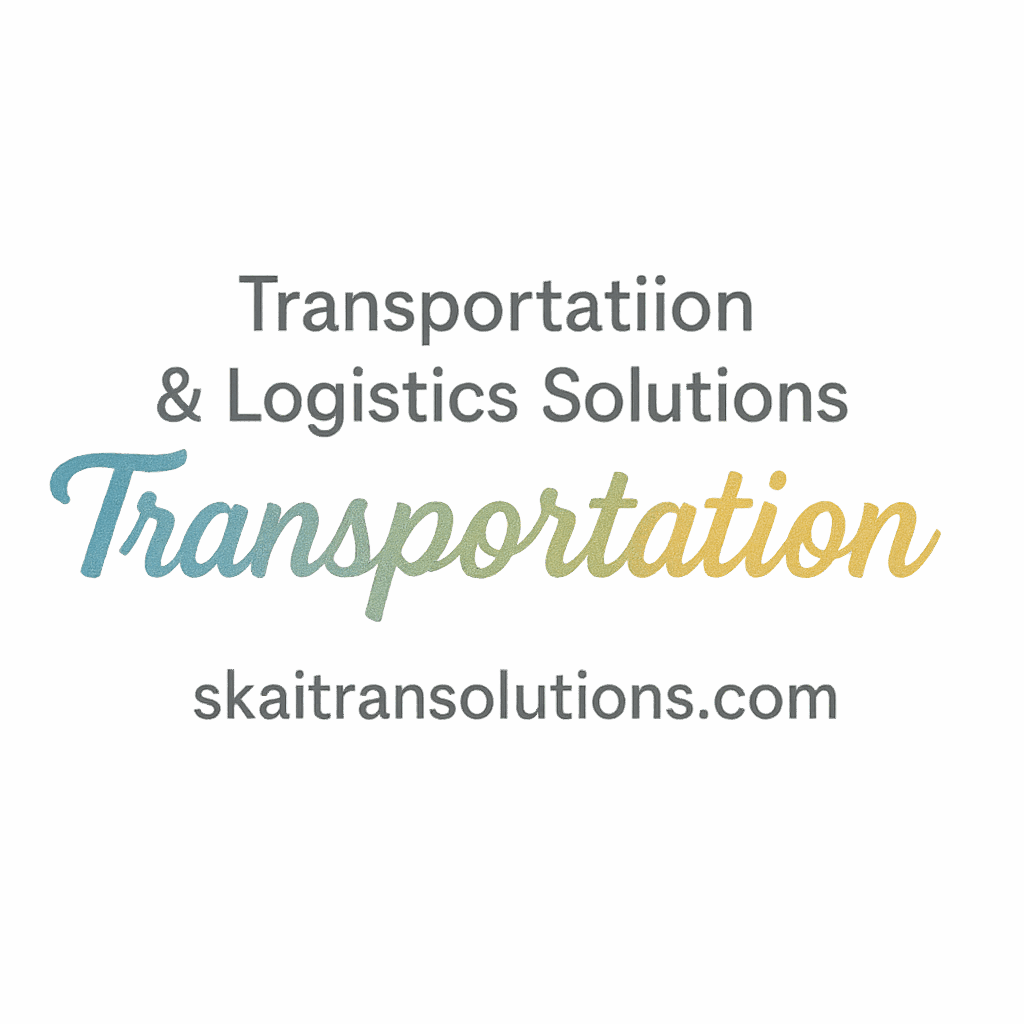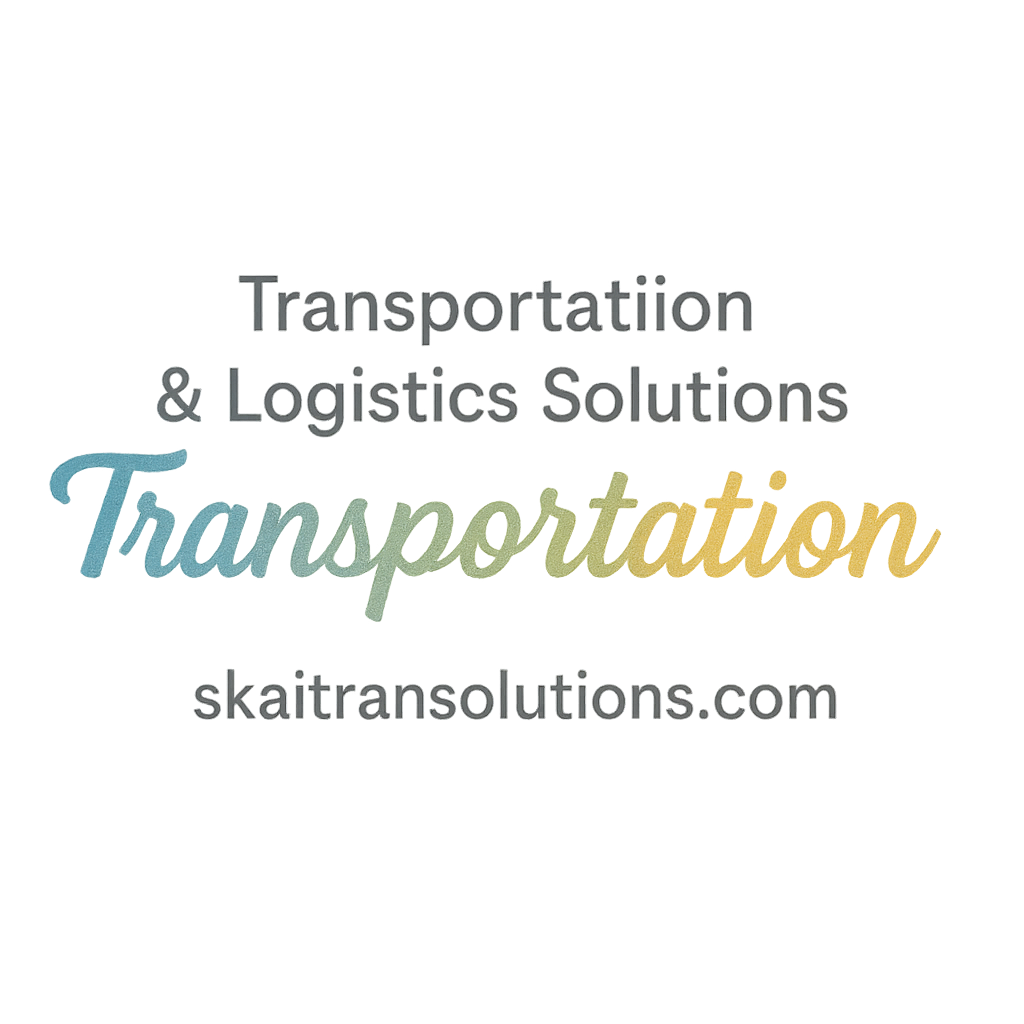Ever wonder why your supply chain expenses feel like a bottomless pit? You’re not alone. With rising fuel costs, labor shortages, and customer expectations climbing sky-high, transportation can easily become the costliest part of your supply chain. But here’s the kicker—by using the right strategies, you can dramatically reduce those costs without sacrificing service quality.
Let’s dive into five powerful transportation strategies that will help your business save big while staying ahead in the logistics game.
Strategy 1: Route Optimization – The Fastest Way to Trim Transportation Fat
Route optimization isn’t just a buzzword—it’s a game-changer. Imagine shaving hours off delivery times and gallons off your fuel bill. Sounds good, right?
Why Route Optimization Matters
Inefficient routes lead to wasted fuel, labor overtime, and late deliveries. By optimizing routes, you can reduce mileage, minimize idle time, and boost delivery efficiency.
According to the experts at SKAI TranSolutions, implementing route optimization software can cut delivery costs by up to 20%.
Tools and Tech to Supercharge Your Routes
- GPS and Telematics
- AI-based predictive analytics
- Dynamic routing platforms like TMS (Transportation Management Systems)
Want to know more? Check out Transportation Technology Innovation to see how modern solutions are shaping smarter routes.
AI and Machine Learning in Route Optimization
Artificial Intelligence isn’t just for sci-fi anymore—it’s driving real results in logistics.
- Predictive Traffic Models: Anticipate congestion and reroute in real-time.
- Reduced Idle Time: Smart dispatching means less waiting around and more moving.
Combine AI with historical data and your supply chain becomes a well-oiled machine.
Strategy 2: Consolidated Shipments – More in One Go
Picture this: instead of sending five half-empty trucks, you send two fully loaded ones. That’s shipment consolidation in action.
What is Freight Consolidation?
Freight consolidation combines smaller shipments headed in the same direction into a single, larger shipment. This not only slashes transportation costs but also reduces your carbon footprint.
Explore this concept more under Logistics & Supply Chain Solutions.
The Magic Behind Load Balancing
Balancing load capacity with delivery timelines is key. Too early and you pay extra storage; too late and customer satisfaction drops.
TMS software plays a critical role here by:
- Identifying consolidation opportunities
- Balancing loads against SLAs (Service Level Agreements)
- Prioritizing routes for cost savings
Strategy 3: Embracing Transportation Technology Innovation
Technology is no longer optional—it’s the heartbeat of modern logistics. From tracking shipments in real-time to automating driver logs, innovation is transforming transportation.
GPS and Telematics: Keeping You in the Loop
Real-time tracking isn’t just cool—it’s crucial. It improves:
- Fleet visibility
- Delivery ETA accuracy
- Customer satisfaction
Head over to Transportation Industry Insights for the latest tech trends.
Automation and Autonomous Vehicles – The Future is Now
You’ve probably heard about autonomous vehicles. But are they actually cost-effective?
Benefits of Automation:
- Fewer human errors
- Lower labor costs
- Better scheduling accuracy
Learn how Autonomous technology is paving the way for cost savings.

Strategy 4: Partnering with 3PLs – Logistics Experts to the Rescue
Third-party logistics (3PLs) are the secret weapon of many cost-savvy businesses.
Why Outsourcing Works
A 3PL already has the infrastructure, tech, and expertise. That means you:
- Spend less on in-house logistics
- Avoid compliance pitfalls
- Improve speed and reliability
Learn how to avoid costly compliance errors at Customer Experience & Safety and Compliance.
KPIs and Performance Metrics to Monitor 3PL Success
Not all 3PLs are created equal. Keep them accountable with metrics like:
- On-time delivery rate
- Freight cost per unit
- Safety inspection scores
Monitor these on platforms like Metrics and Performance for consistent improvement.
Strategy 5: Strategic Sourcing and Modal Shifts
Sometimes, the best savings come from switching things up.
What is Modal Shifting?
It’s choosing the most cost-effective mode of transportation: rail, air, sea, or truck. Intermodal options are becoming increasingly popular for long hauls.
Check out Strategy for insights on effective logistics planning.
The Green Bonus: Sustainability Meets Savings
Going green isn’t just ethical—it’s economical. Intermodal shipping reduces emissions, fuel use, and long-term costs.
Dive into the world of Supply Chain sustainability today.
Operational Best Practices to Support Cost Reduction
Cost-saving isn’t just about strategies—it’s about consistency.
Cross-Functional Communication
When procurement, warehousing, and transportation work together, magic happens.
Proactive vs. Reactive
Anticipating disruptions is always cheaper than reacting to them.
Visit Operational Best Practices to implement frameworks that work.
Risk Management and Insurance Considerations
Cost-cutting doesn’t mean cutting corners.
- Get Insured: Always protect against loss, theft, and damage.
- Stay Compliant: Regular Safety Inspections keep you out of legal trouble.
Explore Insurance strategies tailored for transportation logistics.
Final Thoughts on Cost-Effective Supply Chain Transportation
Short-term fixes might save you pennies, but long-term strategies save you fortunes. Transportation isn’t just a line item—it’s a strategic lever. Use it wisely.
Need help building a customized cost-saving strategy? SKAI TranSolutions offers tools, insights, and experts ready to assist.
Conclusion
There you have it—five practical transportation strategies that can significantly reduce your supply chain costs. From smarter routing to leveraging third-party logistics, each tactic helps you trim the fat and boost efficiency. In an age where every dollar counts, being proactive about your transportation spend is no longer optional—it’s essential.
FAQs
1. What is the most cost-effective mode of transportation for supply chains?
Intermodal transport (combining rail and truck) often provides the best mix of cost and efficiency.
2. How can route optimization software save money?
It reduces fuel consumption, delivery times, and idle time, leading to lower operational costs.
3. Is freight consolidation worth it for small businesses?
Absolutely. Consolidating shipments can help smaller businesses reduce costs and compete with larger players.
4. How do 3PLs help in reducing logistics expenses?
They provide scalable solutions, reduce overhead, and ensure regulatory compliance—often at a lower cost than managing logistics internally.
5. What are the key KPIs in transportation cost management?
Metrics like cost per delivery, on-time rate, and vehicle utilization are essential for performance tracking.
6. Are autonomous vehicles viable for logistics now?
They’re still in early adoption stages, but they offer promising long-term cost savings and efficiency gains.
7. What’s the role of technology in reducing supply chain costs?
Tech tools streamline operations, improve decision-making, and reduce waste—ultimately saving money.


